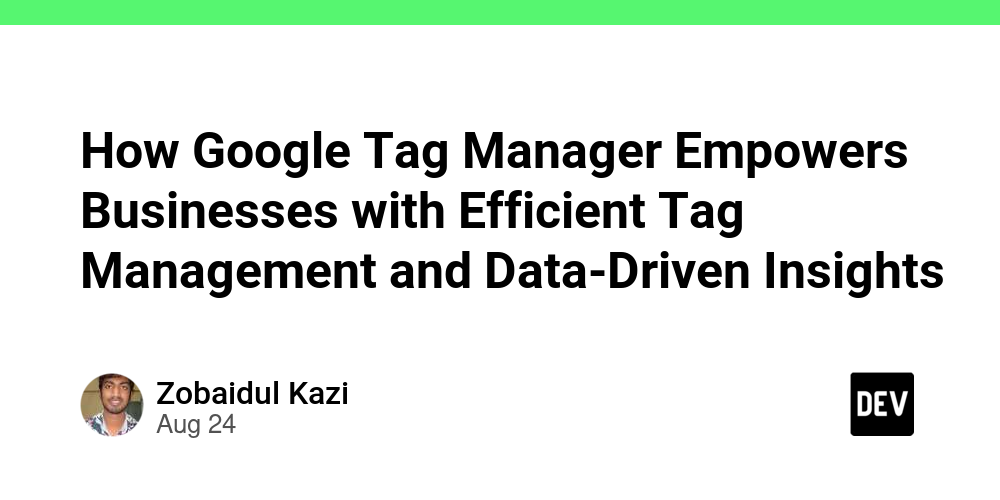Why Use Google Tag Manager (GTM)?
Google Tag Manager (GTM) is a powerful tool for managing and deploying marketing tags on your website or app without requiring constant developer intervention. Here’s why using GTM is beneficial:
Benefits of Using Google Tag Manager
-
Ease of Use and Flexibility:
- Simplified Tag Management: GTM allows non-technical users, like marketers, to manage tags (like Google Analytics, Facebook Pixel, etc.) without relying on developers. This makes it easy to add, update, or remove tags as needed.
- Tag Templates: GTM provides built-in templates for commonly used tags, making it easy to configure and deploy them without custom coding.
-
Centralized Control:
- Single Place for All Tags: GTM provides a single interface to manage all your tags. You don’t have to dive into the website’s codebase to add or modify tags, reducing the risk of errors and ensuring consistency across pages.
- Version Control and Debugging: GTM allows you to create different versions of your container and roll back to previous versions if needed. The built-in debugging tools help test tags before they go live, ensuring accuracy.
-
Improved Website Performance:
- Asynchronous Loading: Tags implemented via GTM load asynchronously, meaning they don’t block the loading of other elements on the page. This helps maintain or even improve website performance.
- Efficient Tag Management: By handling all tags through GTM, you reduce the number of hard-coded tags on your site, which can streamline and speed up your page loading times.
-
Enhanced Data Accuracy:
-
Data Layer: GTM uses a
dataLayerto collect and manage data from your site before sending it to analytics and marketing tools. This helps ensure that the data collected is accurate and consistent, which is critical for making informed business decisions. - Dynamic Tag Management: GTM enables the dynamic deployment of tags based on specific conditions, such as user actions or events, ensuring more precise data collection.
-
Data Layer: GTM uses a
-
Faster Implementation of Marketing Campaigns:
- Quick Launch of Campaigns: Marketing teams can quickly deploy new tags for tracking campaigns, experiments, or promotions without needing to wait for a development cycle, which can be crucial for timely marketing efforts.
- Event Tracking: GTM allows you to set up event tracking for various user interactions (like button clicks, form submissions, etc.) without modifying the website’s code. This enables more detailed and granular tracking of user behavior.
-
Scalability:
- Supports Multiple Platforms: GTM can be used across multiple platforms, including websites, mobile apps, and AMP pages, providing a scalable solution for tracking and managing tags across your entire digital ecosystem.
- Cross-Domain Tracking: GTM simplifies cross-domain tracking, making it easier to track users across multiple websites or subdomains within a single container.
How Google Tag Manager Works
-
Container and Tags:
- Container: GTM operates using a “container” snippet that you place in your website’s code. This container holds all your tags, triggers, and variables.
- Tags: A tag is a snippet of JavaScript or HTML that sends information to a third-party tool (like Google Analytics). With GTM, you add these tags through the GTM interface rather than directly in your site’s code.
-
Triggers:
- Event-Based Triggers: Tags are fired based on triggers, which are rules you define in GTM. For example, a tag can be triggered on a page load, a button click, or when a form is submitted.
- Custom Triggers: You can create custom triggers to fire tags based on specific conditions, like URL paths, custom events, or specific user interactions.
-
Variables:
- Dynamic Data Collection: Variables in GTM store information used by tags and triggers. For example, a variable might store the page URL, a form field value, or a custom data layer value.
- Custom Variables: You can create custom variables to capture specific data that is important for your tags, such as user IDs or purchase amounts.
-
Data Layer:
-
Central Data Source: The
dataLayeris a JavaScript object that passes information between your website and GTM. This allows you to push dynamic data (like transaction details or user IDs) into GTM for use in tags and triggers. -
Structured Data Handling: The
dataLayerensures that data is organized and structured consistently, which is crucial for accurate and reliable data collection.
-
Central Data Source: The
-
Tag Firing and Data Collection:
- Tag Deployment: Once configured, tags are fired based on the triggers you’ve set. For example, when a user completes a purchase, a tag can fire to send transaction data to Google Analytics.
- Data Aggregation: The data collected by the tags is then sent to the respective platforms (like Google Analytics, AdWords, etc.) for analysis and reporting.
How Google Tag Manager Helps a Business
-
Improves Decision-Making:
- Accurate Tracking: GTM ensures that businesses can track user interactions, behaviors, and conversions with precision, leading to better insights and data-driven decision-making.
- Enhanced Reporting: With proper tracking in place, businesses can generate more comprehensive reports that help understand customer journeys, optimize marketing efforts, and improve ROI.
-
Streamlines Marketing Operations:
- Faster Marketing Iterations: GTM reduces the dependency on developers, allowing marketing teams to implement and test tags swiftly, speeding up campaign launches and optimizations.
- Cost Efficiency: By minimizing the need for development resources for tag management, businesses can reduce costs and allocate resources more effectively.
-
Optimizes User Experience:
- Performance Improvements: Since GTM allows for the asynchronous loading of tags, it can help improve website performance, resulting in a smoother and faster user experience.
- Personalization: GTM enables more granular tracking, which can be used to personalize user experiences based on their behavior, leading to higher engagement and conversions.
-
Supports Compliance and Privacy:
- GDPR and CCPA Compliance: GTM can be configured to respect user consent settings, ensuring that tracking is only done if the user has agreed, helping businesses comply with regulations like GDPR and CCPA.

